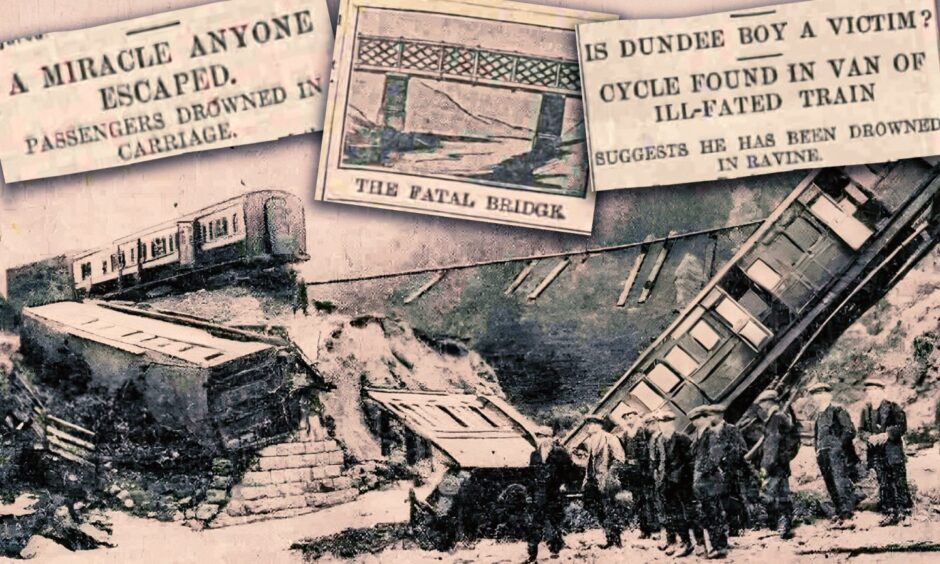
A train tragedy in the Highlands in 1914 vividly reveals how life can change in the blink of an eye.
One second a 30-year-old woman from Edinburgh was admiring the tumultuous River Dulnain from her train carriage, the next she was swept into the water.
The railway bridge collapse which took the lives of five passengers at Carrbridge, near Aviemore was considered the worst in the history of the Highland Railway system, by then almost 50 years old and boasting a good safety record.
The incident occurred amid bad weather, but nothing the train driver thought was out of the ordinary, as he later told the accident inquiry.
Nothing wrong in the hours leading up to Carrbridge train accident
This was backed up by Donald Cameron, foreman surfaceman who crossed the bridge that morning and saw nothing wrong.
But that was before the storm which came in the late morning, and it was no ordinary storm.
Donald said that on looking towards the hills, where the source of the burn was, he saw the sky was “of an abnormal description, inky black.
“I thought something extraordinary must be occurring, and there were tremendous noises in the hills.”
The water rose rapidly, sweeping away a foot bridge completely and inundating fields.
Then the full force of the flood struck the railway bridge and carried it away as the train was on it.
First, the tender derailed, placing extra strain on the culvert, which the bridge couldn’t withstand.
It gave way and three of the passenger coaches fell into the raging river.
One train carriage broke in two
One struck the river bed and was broken in two, the force of the waters sweeping one half down the river for a quarter of a mile.
The carriage in front of it fell on the north side and was left standing on its head.
Witnesses estimated that the torrent had torn away a gap of 50ft below the railway line.
The flood swept boulders weighing ten tons nearly a mile down river like pebbles.
“The unfortunate passengers had little chance to battle with the terrible rush of water, which the rescuers were equally hampered by the fury of the elements,” reported the Evening Express.
We don’t know how many passengers were on board that fateful day, but it seems a miracle that there weren’t more than five fatalities.
Miraculous escapes
Dramatic tales emerged from survivors.
One passenger said as the carriage toppled into the water his hand was dashed through the window and badly cut.
But he escaped with his life, being swept out of one of the coaches by the inrush of water.
An Edinburgh policeman, on holiday in the Highlands, managed to extract himself from one of the wrecked carriages and reach the bank.
One of the carriages remained hanging over the embankment, so passengers were able to get out and start helping others, including a naval rating from HMS Amphion.
New York man swept down river
One of the passengers, a Mr Crawford, came from New York and was swept down river before managing to get hold of some branches, where he remained until he was rescued.
He and a nurse on board were taken to the Carrbridge Hotel, suffering badly from shock.
Other passengers were taken to the Northern Infirmary in Inverness, and some were treated at the Station Hotel in Inverness.
One carriage was so badly smashed that the door wouldn’t open and a woman trapped inside had to be sawn free.
One of the most poignant stories told by the survivors was about Mary Susan Guthrie of Edinburgh, the 30 year old niece of Lord Guthrie, a prominent judge and lawyer.
She was travelling to meet her father in Inverness.
A Mr and Mrs McLennan of Auchterneed were in the same compartment and said that as the train drew up on the bridge, Miss Guthrie rose from her seat and gazed in admiration on the raging, roaring river.
Tragic final moments
As reported by the People’s Journal: “Oh what a fine river!” she remarked, and little did she imagine she would perish in the flood.
When the bridge gave way the carriage crashed down the bank and Miss Guthrie hastened to escape.
She had opened the door of the compartment and no sooner had she done so than the water carried her away and she was never seen alive again.
Mr McLennan said: “It was a terrible sight to see her swept away from us.
“We had the utmost difficulty getting clear of the wreckage.”
Mrs McLennan was pinned in by woodwork, so a Colonel Coril of Strathpeffer, who had managed to free himself from a first class compartment, ran to a cottage about three quarters of a mile from the scene and got hold of two handsaws.
“We soon got at Mrs McLennan. A number of men had gathered, and the carriage was raised a little bit to that it was easy to pull out the lady.”
Miss Guthrie’s body was found two days later at Tullochgribban, five miles from the scene.
Two of the dead were well known in Inverness, a Duncan MacPherson, ex-treasurer of the Burgh of Inverness and a pillar of the Free Church, and auctioneer William J Morrison.
A Mr and Mrs Chudleigh from Devon also died, he a Justice of the Peace. They were buried in Carrbridge.
Dundee lad missing following Carrbridge train accident
Mystery surrounded the whereabouts of 16 year old Stewart Boyd from Downfield, Dundee who had set out to cycle to Strathpeffer, but was believed to have joined the train at Aviemore.
His bike was found in the guard’s van, marked Strathpeffer, sparking alarm bells.
The lad eventually turned up safe and well in Strathpeffer, having apparently walked there in 48 hours.
And more mystery when a piece of luggage was found labelled ‘Professor Eeveros, Strolling Player On Tour’.
Strolling player had a lucky escape
Professor Eeveros was later found in Peterhead, having had a miraculous escape.
While the train was falling he broke a window and scrambled through to find himself waist-deep in water.
He was twice thrown away from the bank, but on his third attempt he reached the safety, went to Aviemore and carried on to his original destination of Tain.
The train wasn’t the only casualty of the flood.
About a mile below the scene, a family had a narrow escape when their croft was overwhelmed with water.
The 14 year old daughter said she saw a huge wave carrying timber bearing down on the house.
Week old baby snatched to safety
She called to her father who snatched up his week old baby and rushed with the rest of the family to a nearby farm.
They all reached safety, but the mother was nearly carried away by the chest high torrent.
An accident inquiry afterwards exonerated the Highland Railway from blame.
The driver, Murdo Ross, said he had seen water coming through the bridge, ‘pretty heavy, but nothing to alarm anybody, and the rails were quite dry.
The first he realised of the problem was when the engine ‘gave a sway on the bridge’.
He said: “The trailing wheels of the engine were on the bridge. I felt the engine give a sort of tip to the left side down the stream. I kept going until the brake came on.
The left hand side of the bridge was down
“As soon as the engine came to a stand I jumped down, and left the engine in charge of the fireman.
“The left-hand side of the bridge was down. The stones on the right-hand side of the bridge were standing.
“The centre carriage was down in the stream. Immediately I went over the bridge collapsed.”
No blame attached
The inquiry found there was no blame on the part of Highland Railway in the accident, as the bridge had never shown the slightest sign of being undermined by the heaviest flood since 1893.
Its collapse was ‘an event that could not have been foreseen and guarded against,’ it concluded.
Further reading:
Confessions of a 70s teenager who reluctantly found himself running a Far North Line station
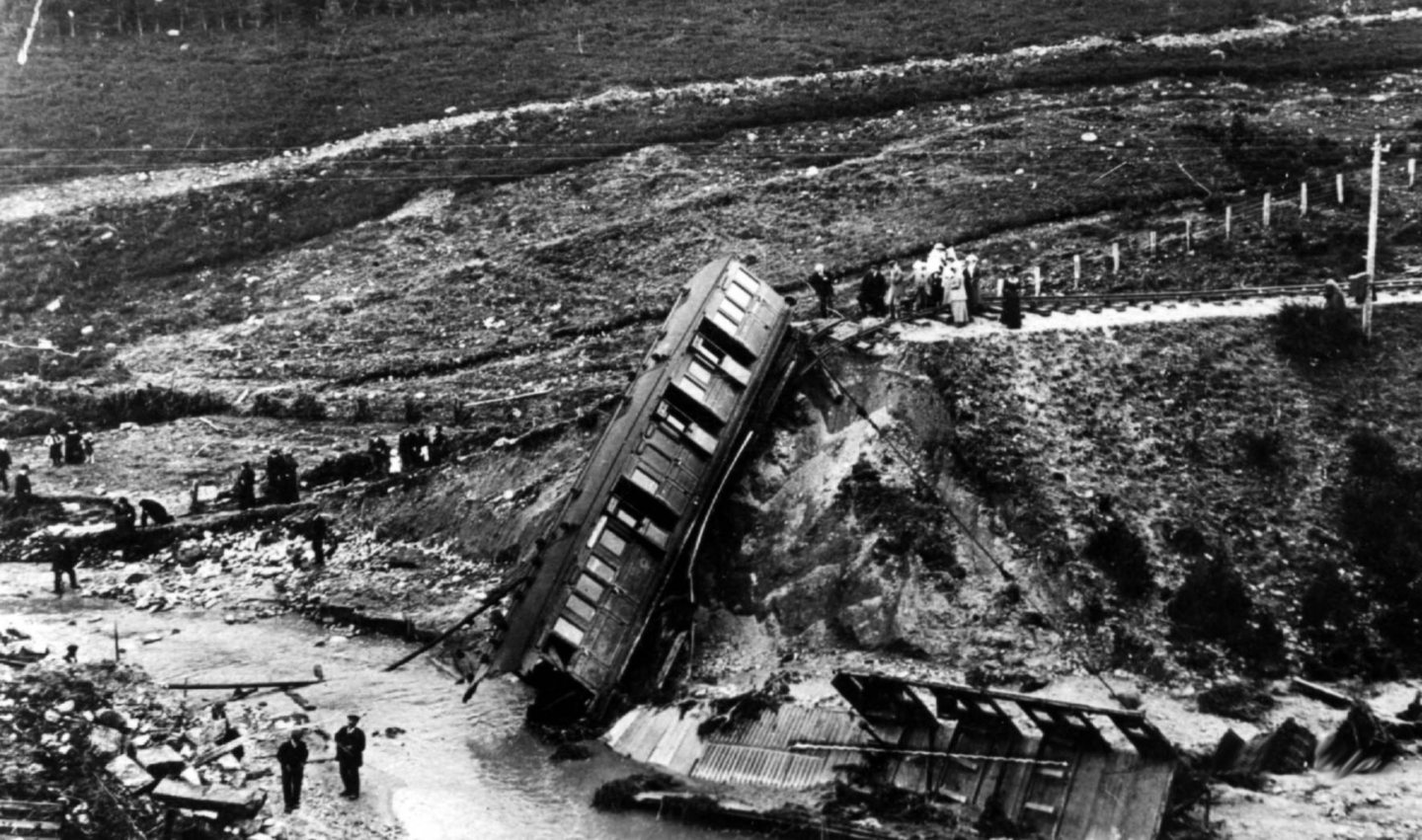
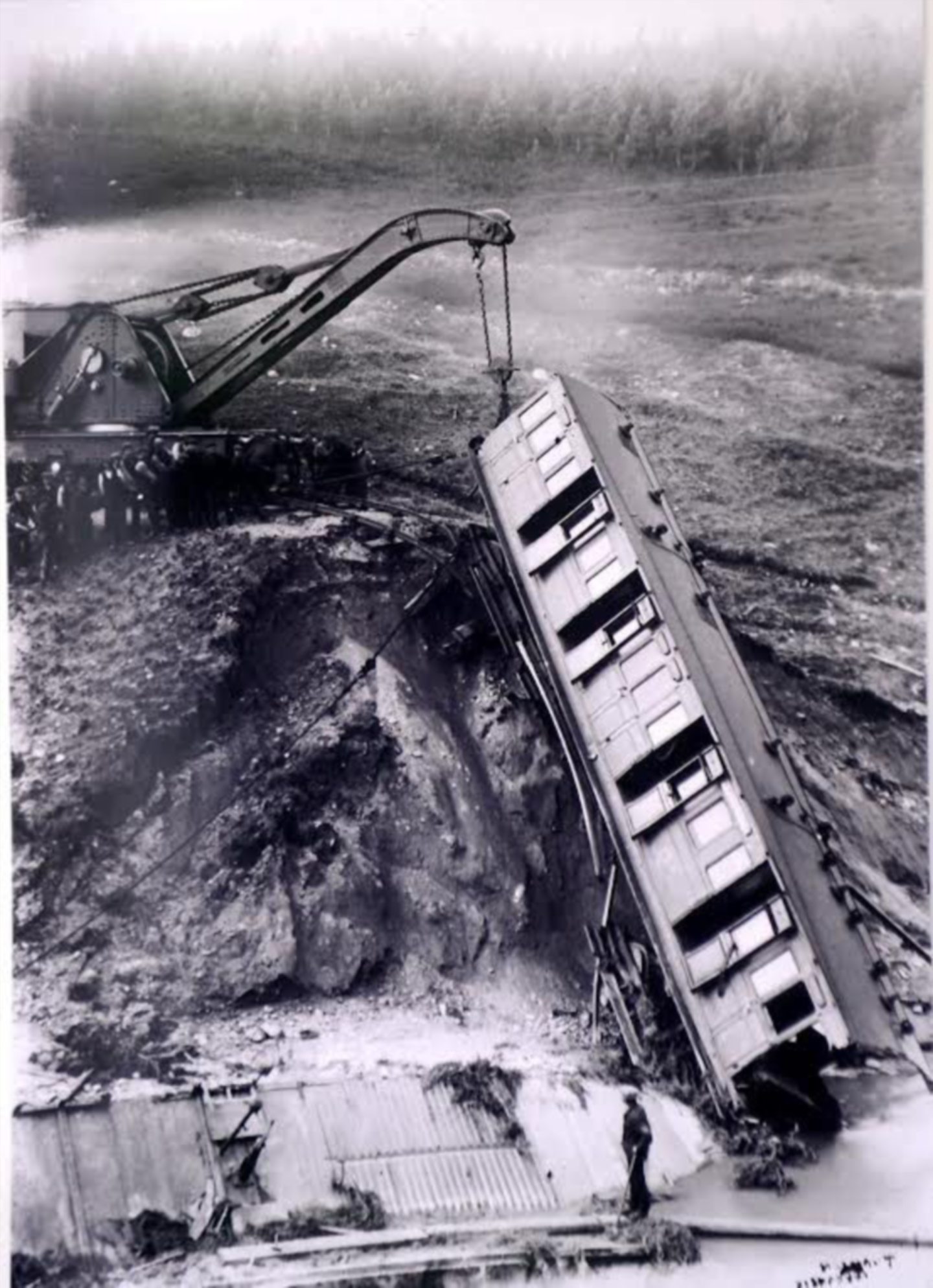
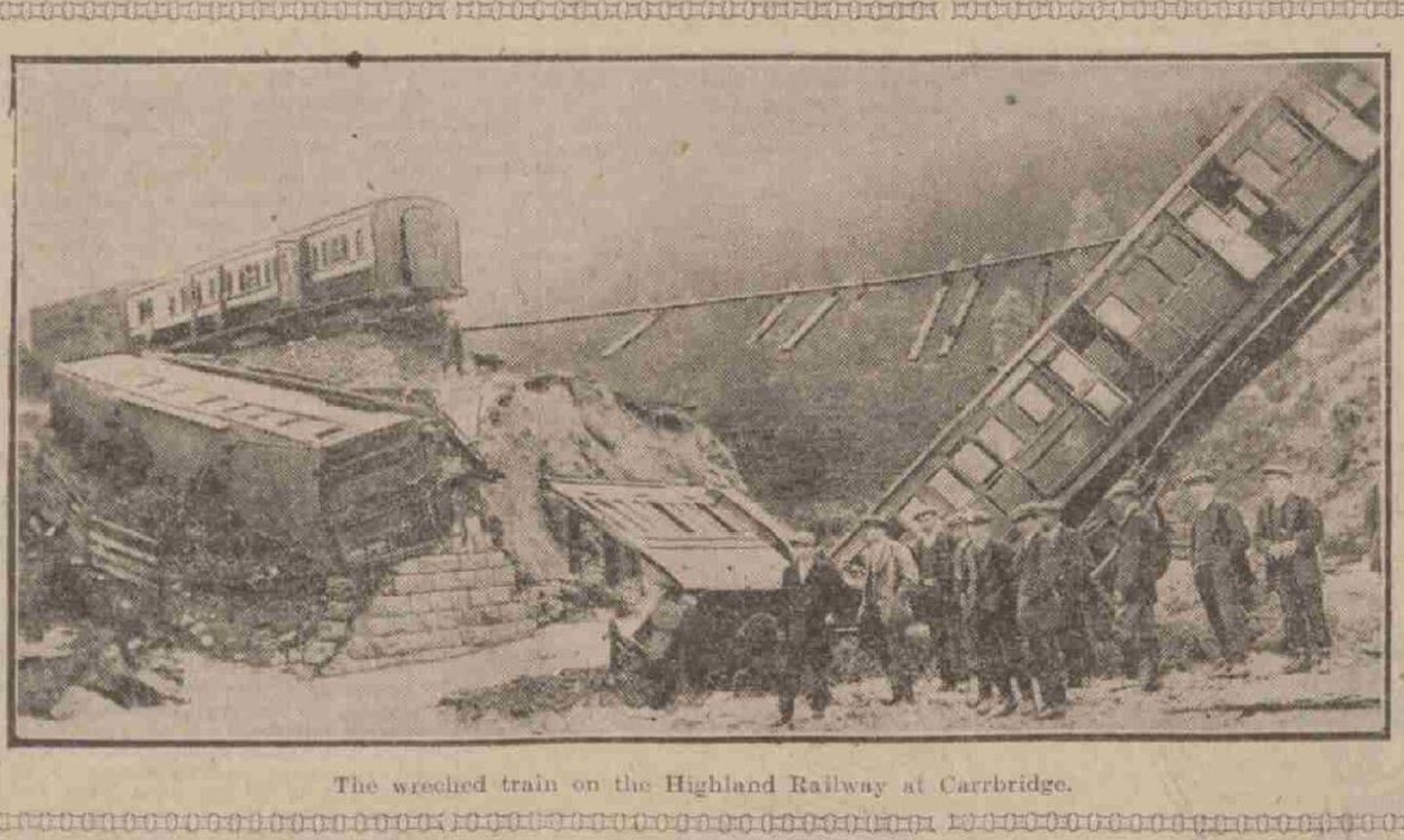
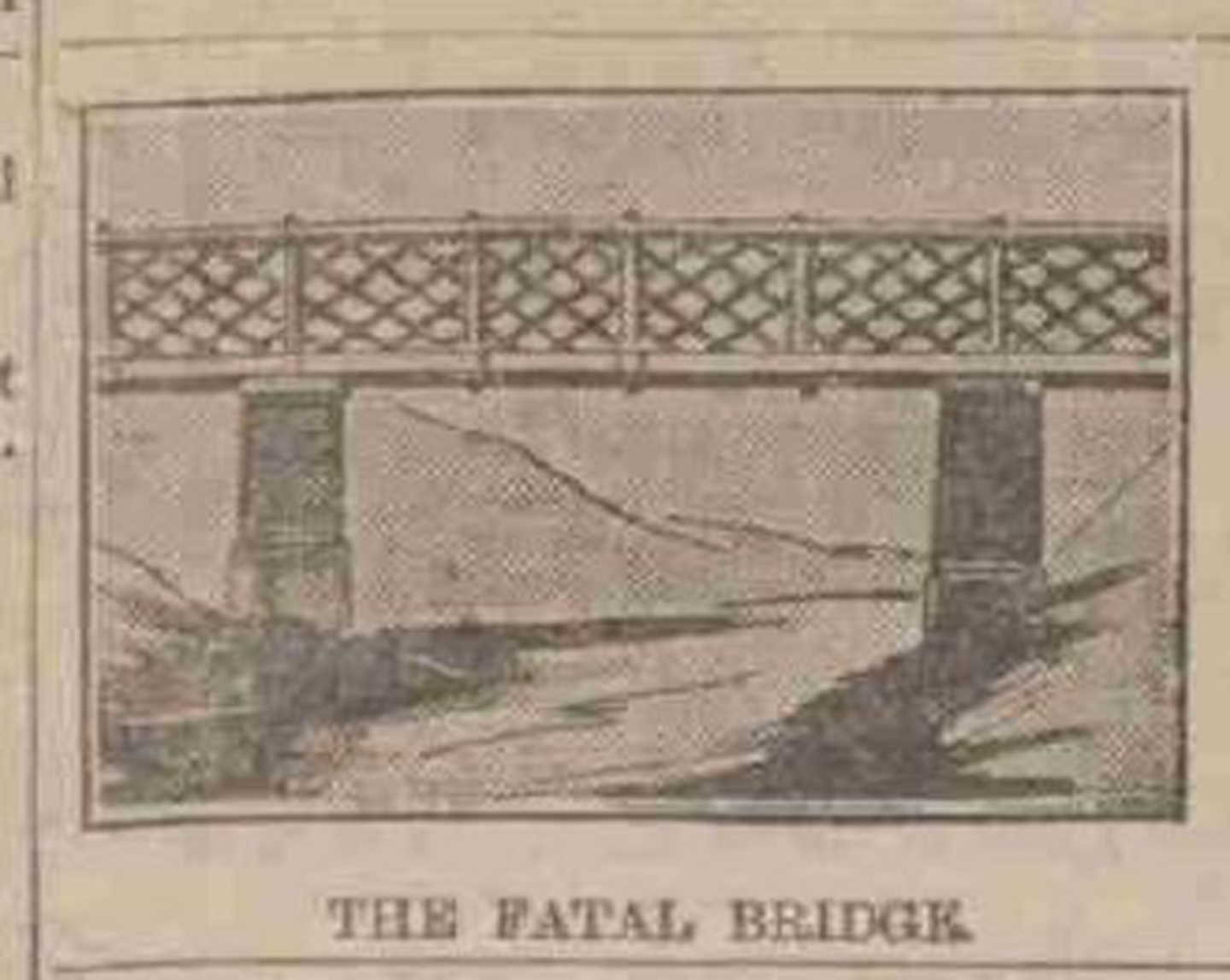
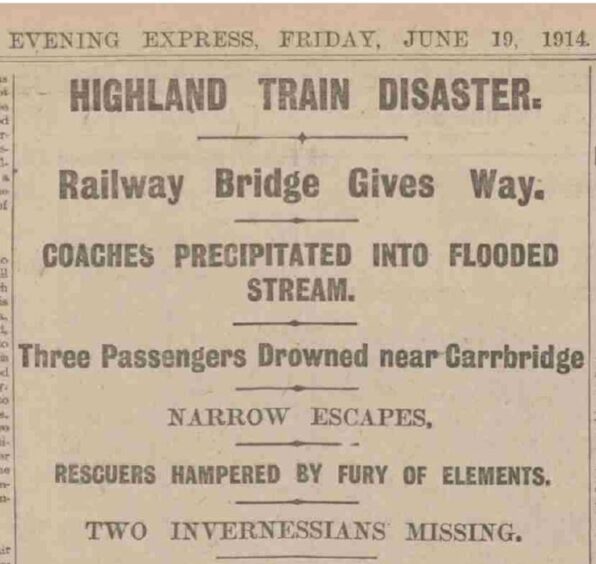

Conversation